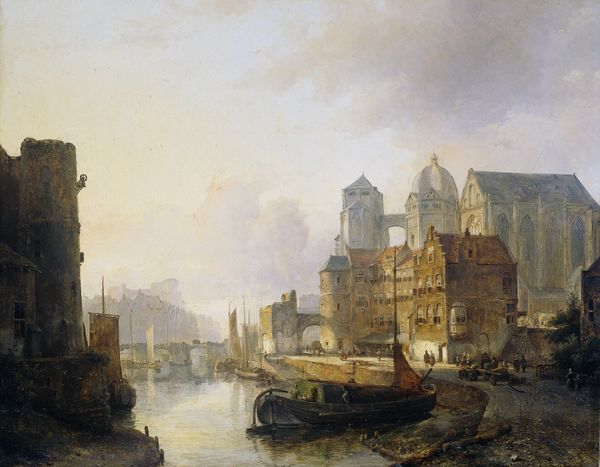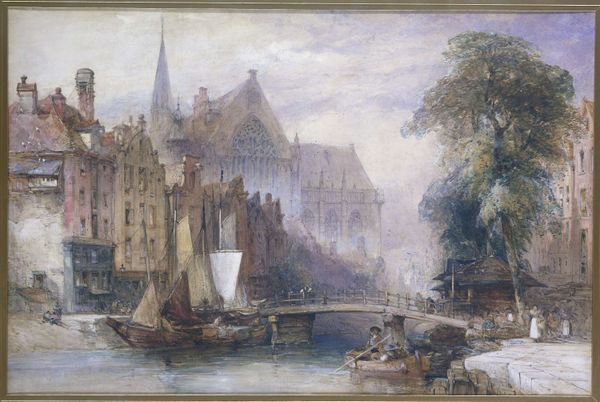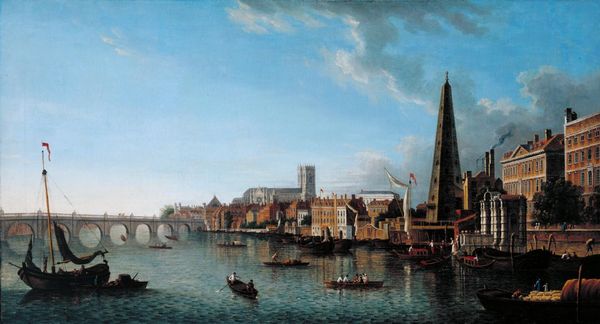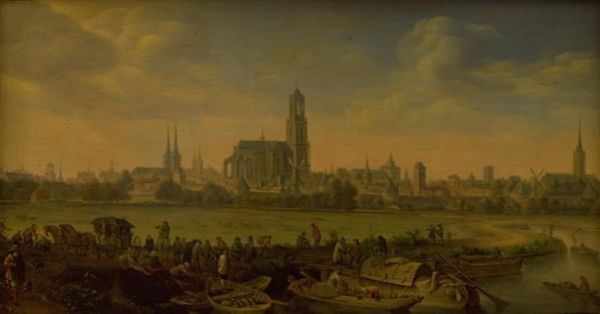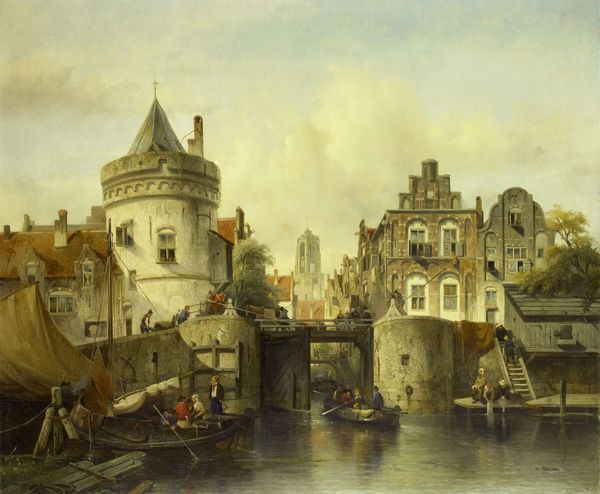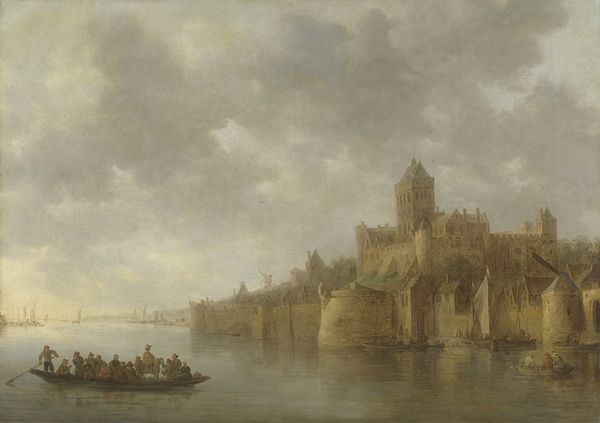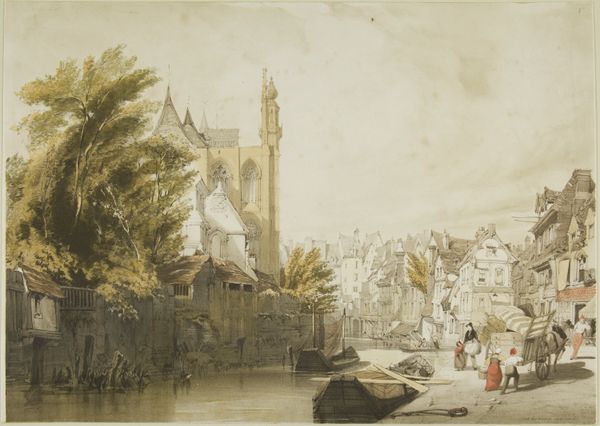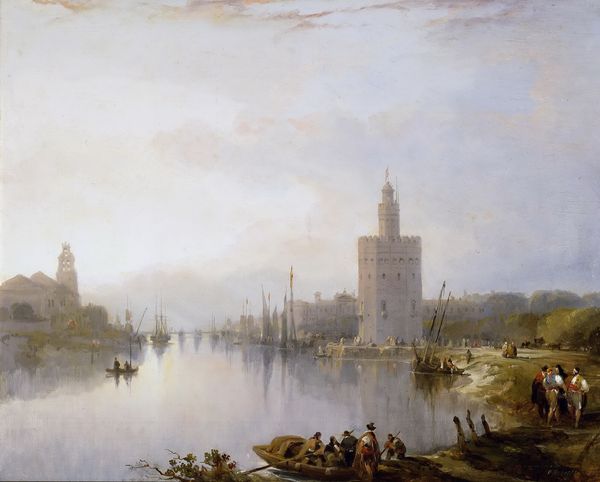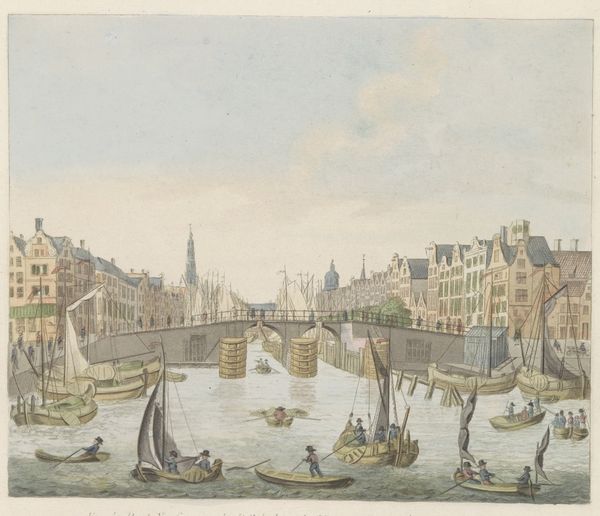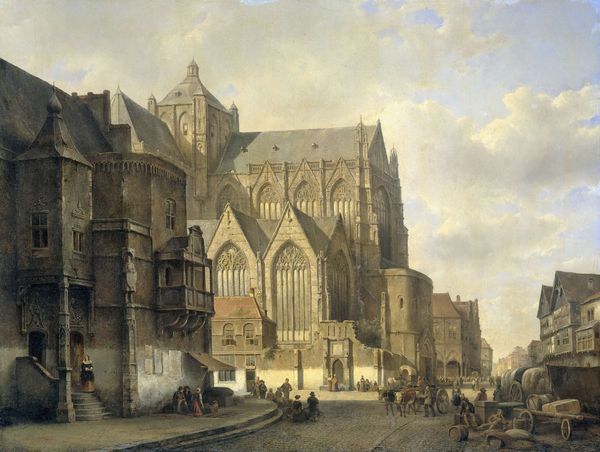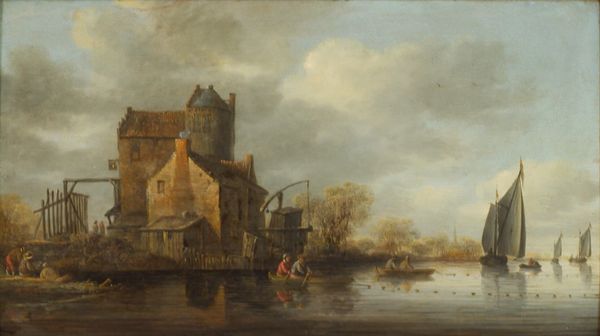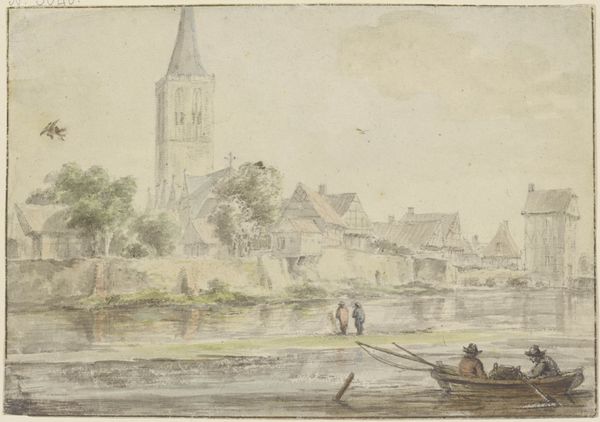
#
urban landscape
#
street view
#
charcoal drawing
#
possibly oil pastel
#
charcoal art
#
oil painting
#
city scape
#
underpainting
#
painting painterly
#
watercolor
Dimensions: height 88 cm, width 105 cm
Copyright: Rijks Museum: Open Domain
Curator: Let's turn our attention to Johannes Bosboom's "The Quay de Paris in Rouen," painted in 1839 and residing here at the Rijksmuseum. What are your first thoughts? Editor: There’s a hushed quality to it. The way the light catches the buildings, everything seems still, almost frozen in time. It's very textural, too, you can almost feel the roughness of the stone and wood. Curator: Bosboom's work often highlights the intricate relationships between urban life and its architectural backdrop. Consider Rouen as a bustling port city in the 19th century—what can this piece tell us about its societal framework? Editor: For me, the interesting thing is in the layering of textures and materials, it’s all about craft. Bosboom seems fascinated with the contrast between the monumental cathedral and the more mundane, functional buildings along the quay. It underscores a relationship to labor, the buildings and ships become material testaments to this dynamic. Curator: Absolutely. And let’s not forget how the church looms in the background. Religious and secular power are ever-present. I think Bosboom captures this with a deft understanding of civic spaces during this time of great change. Editor: Right, and note how the application of what seems like thin layers of oil paint to achieve that muted effect. It's not about bold strokes; it is building layer upon layer. Bosboom is intentionally revealing the constructed nature of this urban reality. You have this material built by human effort, crowned by religion and all filtered and controlled by that painterly hand. Curator: I agree, and this work echoes a broader interest in representations of urban space during this period and can reveal shifts in societal attitudes towards urbanization and industrial growth, along with class and labour. It acts as an echo chamber, showing how historical moments are embedded within artistic pieces. Editor: So, in viewing "The Quay de Paris in Rouen" we begin to understand that it's much more than simply a portrait of a place; it's also a visual and material dialogue that invites deeper considerations on how social dynamics played out then and the very human hands involved. Curator: Indeed, Bosboom gives us much to consider when thinking about city, history, and artistry. Editor: A wonderful nexus of skill and representation.
Comments
rijksmuseum about 2 years ago
⋮
During the Romantic era, the picturesque French city of Rouen in Normandy was a popular destination for artists. They were fond of medieval architecture and considered the great cathedrals to be an expression of pure Christian faith. The houses along the quay in this painting are situated closely together, dwarfed by the cathedral towers rising up behind them.
Join the conversation
Join millions of artists and users on Artera today and experience the ultimate creative platform.
